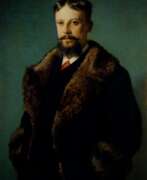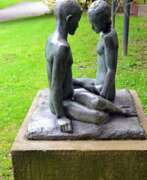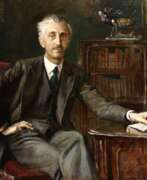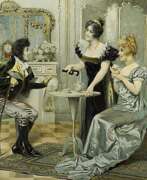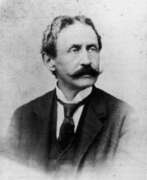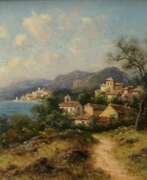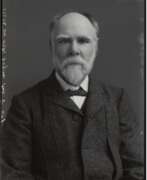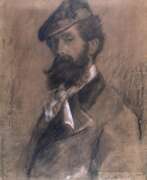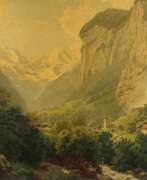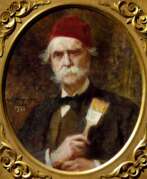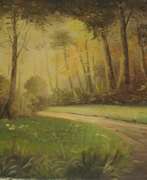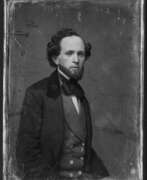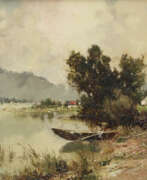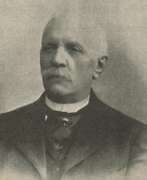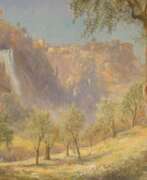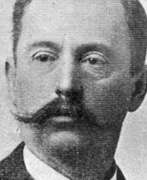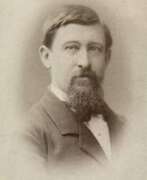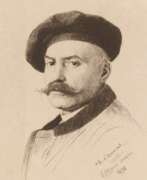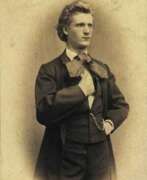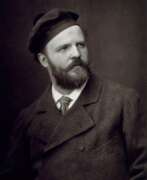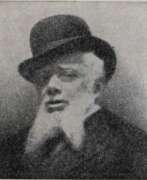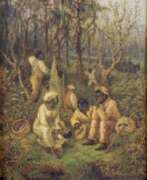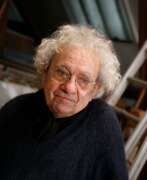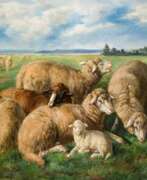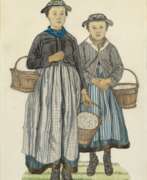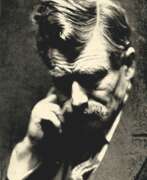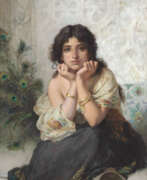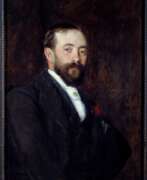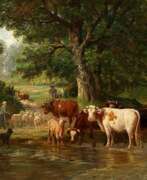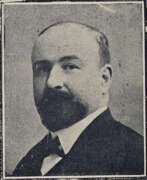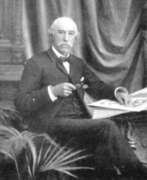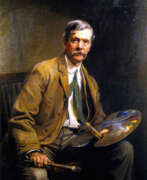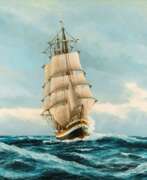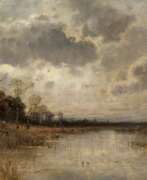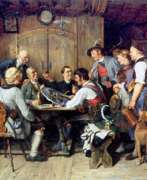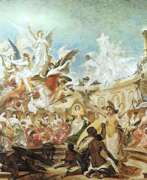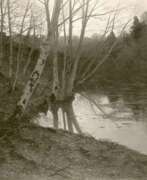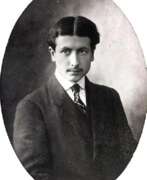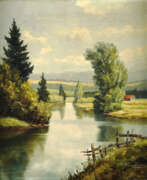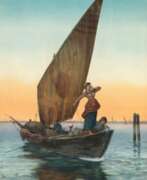Romanticism 20th century
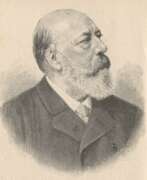

Andreas Achenbach was a German landscape and seascape painter in the Romantic style. He is considered to be one of the founders of the Düsseldorf School.[citation needed] His brother, Oswald, was also a well known landscape painter. Together, based on their initials, they were known as the "Alpha and Omega" of landscape painters.
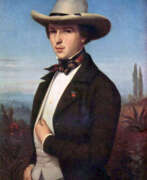

Oswald Achenbach was a German painter associated with the Düsseldorf school of painting. Though little known today, during his lifetime he was counted among the most important landscape painters of Europe. Through his teaching activities, he influenced the Kunstakademie Düsseldorf. His brother, Andreas Achenbach, who was twelve years older, was also among the most important German landscape painters of the 19th century. The two brothers were humorously called "the A and O of Landscapes" (a reference to their initials matching a common German reference to the Alpha and Omega).


Kazimierz Alchimowicz was a Polish painter who is considered one of the last Romantics in Polish painting. Among other things, he illustrated Adam Mickiewicz's poem Pan Tadeusz with a series of twelve paintings (1898) and prints (1903). He was the elder brother of the Polish painter Hiacynt Alchimowicz.
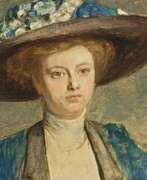

August Allebé was an artist and teacher from the Northern Netherlands. His early paintings were in a romantic style, but in his later work he was an exponent of realism and impressionism. He was a major initiator and promoter of Amsterdam Impressionism, the artist's association St. Lucas, and the movement of the Amsterdamse Joffers. Amsterdam Impressionism – sometimes referred to by art historians as the School of Allebé – was the counterflow to the very strong Hague School in the movement of Dutch Impressionism. As a professor at the Royal Academy of Amsterdam (Rijksakademie van beeldende kunsten) he fostered a cosmopolitan attitude toward art and the promotion and motivation of his students, and provided a significant stimulus to developments in modern art.
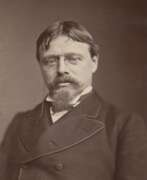

Lawrence Alma-Tadema was a Dutch-British artist renowned for his detailed and romanticized portrayals of ancient civilizations, particularly Rome and Egypt. His meticulous attention to historical accuracy and the lavish representation of marble and luxurious settings distinguished his work. Notably, his fascination with ancient cultures was sparked by his honeymoon visit to Italy and Pompeii, influencing his artistic focus for decades.
Lawrence Alma-Tadema's early work, such as "The Education of the Children of Clovis," showcased his interest in historical subjects and established his reputation. This painting, alongside others like "The Sad Father," demonstrates his commitment to historical detail and narrative depth.
After moving to England due to the Franco-Prussian War and personal reasons, Lawrence Alma-Tadema's career flourished. His works, characterized by their bright palette and refined details, resonated with Victorian audiences, earning him considerable fame and financial success. He was knighted in 1899 and continued to be a pivotal figure in Victorian art, influencing peers and future generations alike.
Lawrence Alma-Tadema's legacy experienced a decline posthumously but saw a resurgence in the 1970s. Today, he is celebrated for his contributions to the Neoclassical and Victorian art movements, with his works featured in prominent collections worldwide, including the Getty Museum and the Tate Gallery.
If you are fascinated by Lawrence Alma-Tadema's artwork and wish to stay updated on sales and auction events related to his works, consider signing up for updates. This will ensure you remain informed about new opportunities to explore and possibly acquire pieces of his illustrious legacy.


Sophie Gengembre Anderson was a British artist of French descent.
Fleeing the revolution in France, her family moved to the United States in 1848, and Sophie had a successful career in America for several years. She specialized in genre and portrait paintings depicting children and women, usually in rural settings.
In 1854 the Andersons moved to London and Sophie's work was well received and exhibited widely at the Royal Academy, the Royal Society of British Artists (RBA) and the British Institution.
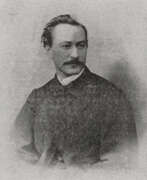

Albert Arnz was a German landscape painter of the Düsseldorf school. He studied painting from 1854 to 1860 at the Dusseldorf Academy of Art, where his two teachers were Andreas and Oswald Achenbach. Arntz painted atmospheric landscapes in Germany, Italy and Switzerland.
Albert Arntz was a member of the Malkasten Art Society and participated in their "living paintings" from 1875 onwards.
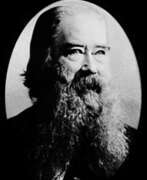

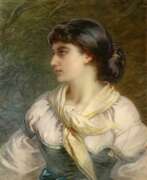

Guido Bach was a German portrait painter who focused mainly on watercolor painting. Bach traveled to Italy, Bohemia, and also visited Egypt. He created portraits and depictions of Italian village life, battle scenes, and images of North African Arab life.
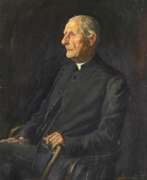

Sabine Baring-Gould was a Victorian British clergyman, poet, writer and folklorist.
He traveled extensively in Europe, studied at Clare College, Cambridge, was ordained in the Church of England in 1864, and was appointed vicar at Horbury. Baring-Gould was a polyglot and knew six languages. Despite his ministry, he had a serious interest in supernatural phenomena and in 1865 published a book called The Book of Werewolves.
In addition to this, Baring-Gould was interested in a wide range of subjects. His work is diverse and covered theology, history, poetry, hymns, fiction, biography, travel, social commentary, and folklore. Baring-Gould collected the folk songs of old English singers, personally visiting them and recording the words and music. In 1889 he published a collection of Songs of the West in four parts, of which he was proud, and also wrote several patriotic hymns.
Baring-Gould was a very prolific writer: during his life he wrote many novels, published short stories in periodicals, the popular "Curious Myths of the Middle Ages," and others, his bibliography numbering some 1,250 works.
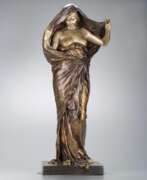

Louis-Ernest Barrias was a French sculptor of the Beaux-Arts school. In 1865 Barrias won the Prix de Rome for study at the French Academy in Rome.
Barrias was involved in the decoration of the Paris Opéra and the Hôtel de la Païva in the Champs-Élysées. His work was mostly in marble, in a Romantic realist style indebted to Jean-Baptiste Carpeaux.
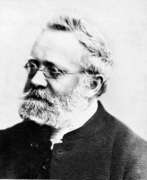

Peter Becker is a German landscape painter, engraver, and lithographer. In his many landscape works he romanticizes the German forest and enlivens it with historical characters. He also painted genre scenes and depicted city streets.
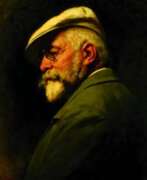

Wohl Gyula Benczúr was a Hungarian painter, recognized as a master of scenes from the history of his native Hungary.
He studied drawing with the Austrian historical painter Franz Heiling, and from 1861 he studied painting at the Royal Bavarian Academy in Munich. Later in his homeland he took up a professorship at the School of Painting.
Benczúr painted portraits of kings, aristocrats and other contemporaries, but his specialty remained large-scale historical paintings with a play of light and shadow. He also took on ancient and biblical themes, as well as genre-based group paintings of families in nature.
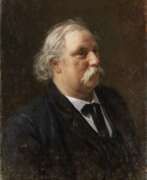

Knud Larsen Bergslien, a Norwegian painter and art teacher, is renowned for his historical paintings, notably "Skiing Birchlegs Crossing the Mountain with the Royal Child." This iconic artwork depicts Birkebeiner skiers rescuing Prince Haakon in 1206, a pivotal moment in Norwegian history.
Bergslien was part of the Düsseldorf school of painting and closely associated with artists Hans Fredrik Gude and Adolph Tidemand. His talent earned him the Order of Vasa from King Oscar II for his painting "The Crowning of King Oscar II in the Nidaros Cathedral." His significant contributions to Norwegian art are showcased in the National Gallery of Norway.


Joseph Birbeck I was a renowned English ceramic painter born in 1862. He was known for his exquisite work on bone china and porcelain, especially with designs that feature intricate fish, game birds, and landscapes. Birbeck's career highlights include his contributions to Royal Doulton and other renowned potteries in Staffordshire, England.
His artistry is well-regarded, with various hand-painted works sold at auction and featured in private collections. Some of his notable pieces include Royal Doulton bone china fish plates made for Tiffany & Co., New York, often hand-painted with intricate fish designs and signed "J. Birbeck, Sen."
Several works by Birbeck are highly valued by collectors and are found in prestigious auction houses and antiques marketplaces. If you're interested in collecting his works or learning more about them, you can find a range of his pieces, such as ornithological cabinet plates and decorative vases, at various auctions and antique dealers.
For those interested in exploring the art and history of Joseph Birbeck I, there are numerous platforms where you can track his pieces and find upcoming sales. Consider signing up for updates on upcoming sales and auction events focused on Birbeck's art. This subscription will keep you informed about new product releases, exclusive collectible items, and related news in the field of art and antiques.


Giovanni Boldini was an Italian genre and portrait painter who lived and worked in Paris for most of his career. According to a 1933 article in Time magazine, he was known as the "Master of Swish" because of his flowing style of painting.
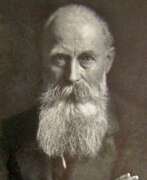

Eugen Felix Prosper Bracht was a German landscape painter.
A late Romanticist painter, Bracht was known for his moody landscapes and coastal scenes in North Germany, and began a sketching trip through Syria, Palestine and Egypt from 1880 to 1881. In 1882, he became a Professor of Landscape Painting at the Prussian Academy of Arts.
Later, Bracht became a representative of German Impressionism.
In 1901, he obtained a teaching position at the Dresden Academy of Fine Arts that he held until 1919.
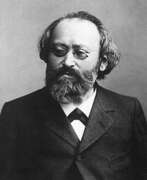

Max Bruch, full name Max Christian Friedrich Bruch, was a German composer and conductor, violinist and teacher of the late Romantic period.
Bruch studied with the composer and pianist Ferdinand Hiller (1853-1857), wrote a symphony at age 14, and won a scholarship that allowed him to study in Cologne. His first opera, Joke, Deceit and Revenge, was performed in 1858. He conducted orchestral and choral societies in Germany, England and Poland, and from 1890 to 1911 he was a professor at the Berlin Academy of Arts.
Bruch was an ambitious and prolific composer. His greatest success during his lifetime was his huge works for chorus and orchestra, Beautiful Ellen (1867) and Odysseus (1872). He was also the author of string concertos and pieces for violin and orchestra. His Violin Concerto No. 1 in G minor (1866) is one of the most popular Romantic violin concertos.
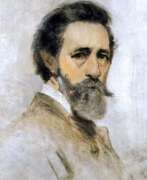

Anton Burger was a German painter, draftsman and etcher. He was a prolific and versatile painter, producing works in almost every genre. His paintings sold very well and, in the area around Kronberg, it was considered a sign of good taste to have a "Burger" in one's home. In 1861, he and Jakob Fürchtegott Dielmann (an old friend from his days at the Städelschule) founded the Kronberg Artists' Colony, where he remained until his death. He was highly regarded and came to be known as the "King of Kronberg".


Léon Emile Caille was a French genre painter who specialized in touching, sentimental scenes, often depicting mothers with children.
He graduated from the École des Beaux-Arts in Paris and became known and successful for his small, simple works about peasant life. Caillé romanticized rural life, and it was popular at the turn of the century, especially among the growing number of city dwellers who were already feeling nostalgic.


Jacques François Joseph Carabain was a Dutch-Belgian painter, known primarily for his scenes of cities and buildings in the Romantic-Realist style. He was especially interested in Medieval and Baroque structures, and was often attracted to busy market places.


Charles Ferdinand Ceramano, born Charles Ferdinand Semain, was a Belgian painter and illustrator of the Barbizon school.
Ceramano's favorite subjects were pastoral landscapes and scenes of sheep in a sheepfold or in a meadow.
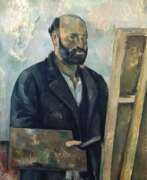

Paul Cézanne, a French Post-Impressionist painter, was pivotal in shaping the transition from 19th-century art to a new, revolutionary approach in the 20th century. His unique and exploratory brushstrokes, utilizing planes of color to form complex fields, made his work instantly recognizable and influential in the development of Cubism.
Cézanne’s early works, influenced by Romanticism and Realism, evolved into a groundbreaking artistic language. He challenged traditional perspective and academic art rules, focusing on objects' structural aspects and art's formal qualities. This approach led to a renewed emphasis on impressionistic color space and modulation principles.
His most notable works, like “Mont Sainte-Victoire,” “The Card Players,” and “The Bathers,” display his mastery in creating depth and dimension through color gradations. These paintings, initially met with skepticism, eventually cemented Cézanne’s reputation as a pioneering artist. His exhibitions, particularly the one-man show by dealer Ambroise Vollard in 1895, played a critical role in his recognition.
Cézanne’s impact on art history is profound, with greats like Henri Matisse and Pablo Picasso acknowledging him as a significant influence. His exploration of geometric forms and innovative use of light and color laid the groundwork for subsequent movements, particularly Cubism.
For collectors and art experts, Cézanne's works are more than just paintings; they are pivotal chapters in the narrative of modern art. His creations, bridging Impressionism and Cubism, continue to inspire and challenge contemporary artists.
To stay updated on new product sales and auction events related to Paul Cézanne, sign up for our updates. This subscription ensures you remain informed about the latest developments in the world of this revolutionary artist.
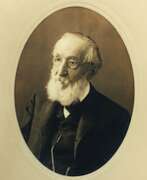

Benjamin Champney was a painter known for his role in White Mountain art of the 19th century. He began his training as a lithographer under celebrated marine artist Fitz Henry Lane at Pendleton's Lithography shop in Boston. Most art historians consider him the founder of the "North Conway Colony" of painters who came to North Conway, New Hampshire and the surrounding area during the second half of the 19th century. His paintings were often used to make chromolithographs that were subsequently sold to tourists who could not afford Champney's originals. He exhibited regularly at the Boston Athenæum and was a founder of the Boston Art Club.
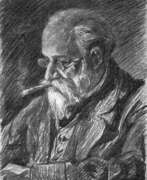

Adolf Iosifovich Charlemagne (Russian: Адольф Иосифович Шарлемань) was a renowned Russian painter, born in 1826 in Saint Petersburg. He excelled in historical, genre, and battle scenes, deeply influenced by his artistic lineage—his father was an architect and his grandfather a sculptor. Educated at the Imperial Academy of Arts under Fyodor Bruni and Bogdan Willewalde, Charlemagne's works are celebrated for their historical accuracy and intricate details.
Charlemagne's notable works include "The Capture of Kazan by Ivan the Terrible" and "The Battle of Kulikovo," which vividly capture significant moments in Russian history. His paintings are known for their meticulous attention to detail, dramatic compositions, and ability to convey the emotional intensity of historical events. These masterpieces are housed in prestigious Russian museums, showcasing his contributions to Russian cultural heritage.
Throughout his career, Charlemagne received numerous accolades, including the titles of Academician and Professor at the Imperial Academy of Arts. His dedication to historical accuracy and artistic excellence made him a prominent figure in Russian art.
For collectors and enthusiasts, owning a piece by Adolf Iosifovich Charlemagne means acquiring a significant part of Russian history. To stay updated on new product sales and auction events related to Charlemagne's works, sign up for our updates today.
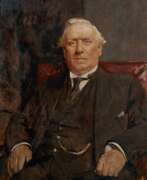

André Edmond Alfred Cluysenaar was a Belgian painter. He was especially known for portraits and female figures. He was member of the Cluysenaar family, descendant from a long line of architects who originated in Aachen. He received his first art lessons from his father, then studied with François-Joseph Navez. Initially, he worked as a sculptor, but devoted himself entirely to painting after 1902. He was firmly grounded in the romantic style at first; producing still lifes and genre scenes, but later turned to impressionism and painted mostly female figures, often semi-nude. He also executed monumental ceiling paintings for the City Hall in Saint-Gilles. During World War I, he lived in London where he established a reputation painting portraits of notable people, including the Royal Family, which were done in a more commercial style using Alfred Stevens as a model. Most of these portraits may be seen in the National Gallery.
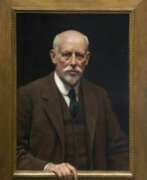

John Maler Collier was a British painter and writer. He painted in the Pre-Raphaelite style, and was one of the most prominent portrait painters of his generation. Both of his marriages were to daughters of Thomas Henry Huxley. He was educated at Eton College, and he studied painting in Paris with Jean-Paul Laurens and at the Munich Academy starting in 1875.


Samuel Colman was an American artist, celebrated for his contributions to the Hudson River School, an art movement known for its romantic portrayal of the American landscape. Born in Portland, Maine, in 1832, Samuel Colman moved to New York City during his youth, where he immersed himself in the art world, influenced by his father's profession as a bookseller and publisher of fine arts. He was a pupil of Asher Durand, a leading figure in the Hudson River School, and this mentorship significantly shaped his artistic direction.
Samuel Colman's work is recognized for its diversity, capturing various landscapes from the bustling harbors of Seville to the serene Green River Valley in Wyoming. His travels across Europe and the American West provided a rich tapestry of subjects for his paintings, reflecting his interest in both oil and watercolor mediums. Notably, his painting "Spanish Peaks, Southern Colorado, Late Afternoon" is an example of his mastery in depicting the American West, offering vital visual records of the nation's landscapes during the 19th century.
A notable figure in the art community, Samuel Colman was instrumental in the establishment of the American Watercolor Society, serving as its first president. His contributions to art were not limited to painting; he was also involved in interior design and wrote theoretical treatises on art. Colman's works are held in prestigious institutions, including the Metropolitan Museum of Art and the Smithsonian American Art Museum, where they continue to inspire and captivate audiences with their portrayal of natural beauty and harmonious unity.
For art collectors and experts, understanding Colman's influence and the breadth of his work offers valuable insights into the evolution of American landscape painting. If you're intrigued by Samuel Colman's artistic legacy and wish to stay informed about sales and auction events related to his work, consider signing up for updates to enrich your collection and knowledge of this distinguished artist.


Charles Cordier, full name Charles Henri Joseph Cordier, was a French painter and innovative sculptor.
Charles Cordier studied in Paris at the École des Beaux-Arts and during his studies met a black sitter, a former slave, this meeting and predetermined his future creative life. In 1848, when slavery was officially abolished in all French colonies, Cordier exhibited his first plaster bust of a Sudanese man and received his first success.
For fifteen years, from 1851 to 1866, Cordier was the official sculptor of the Musée National d'Histoire Historique in Paris, creating a series of busts for the ethnographic gallery. Collecting images and types of various ethnic groups, the artist traveled extensively throughout Italy, Greece, Egypt, and Algeria, as well as France itself. Cordier's works are notable for their striking naturalism, and he also made spectacular use of the colors of various materials - marble of different shades, onyx and bronze, silvering and enamel.
Cordier openly defended the advanced for that time the idea of equality of all races. "Each race," he declared, "has its own special type of beauty. The most beautiful black man is not at all the one who looks more like a white man than anyone else."
Cordier also worked on the sculptural decoration of the Paris Opera House, the Louvre, and the Paris Town Hall. His son was the sculptor Henri Louis Cordier.
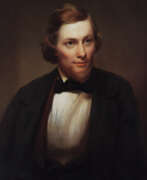

Jasper Francis Cropsey was an important American landscape artist of the Hudson River School.
Cropsey's interest in architecture continued throughout his life and was a strong influence in his painting, most evident in his precise arrangement and outline of forms. But Cropsey was best known for his lavish use of color and, as a first-generation member from the Hudson River School, painted autumn landscapes that startled viewers with their boldness and brilliance. As an artist, he believed landscapes were the highest art form and that nature was a direct manifestation of God. He also felt a patriotic affiliation with nature and saw his paintings as depicting the rugged and unspoiled qualities of America.
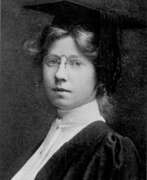

Imogen Cunningham was an American photographer known for her botanical photography, nudes, and industrial landscapes. Cunningham was a member of the California-based Group f/64, known for its dedication to the sharp-focus rendition of simple subjects.


Hans Dahl was a celebrated Norwegian painter. He is best known for his vivid and romantic depictions of Norwegian fjords and the vibrant life around them, capturing the essence of rural western Norway during the late 19th and early 20th centuries. Hans Dahl's art is characterized by its romantic realism, often showcasing young women in traditional costumes against the backdrop of Norway's breathtaking landscapes.
Hans Dahl's technique and color palette were exceptional, employing rubies, aquamarines, sapphires, pearls, and jade to bring to life the red vests of bunads, the blue waters and skies, ivory clouds, and the myriad shades of green in the grassy meadows. His works such as "Arriving for a Celebration" are particularly notable for depicting a lively scene with numerous figures in a composition, a rare approach for Dahl who typically focused on individual or small groups of young women.
His son, Hans Andreas Dahl, also followed in his footsteps but tragically died at a young age. Hans Dahl was honored as a knight of the Royal Norwegian Order of St. Olav, 1st class, in 1902, recognizing his contributions to Norwegian art and culture.
Dahl's paintings, such as "Summerday by Balestrand," "A Young Woman in the Meadow," and "Milkmaid with goats," among others, offer a romantic, nostalgic window into Norwegian culture and landscape, resonating with both Norwegians and international audiences alike. His works have been celebrated for their detailed depictions of village life, the natural beauty of the Norwegian fjords, and the traditional Norwegian way of life, making him a favorite among collectors and enthusiasts of Norwegian art.
For collectors and experts in art and antiques interested in the unique blend of romanticism and realism that defines Hans Dahl's work, staying informed about new sales and auction events is essential. Signing up for updates can provide exclusive access to the latest offerings related to Dahl's paintings, ensuring enthusiasts are always in the know about opportunities to add to their collections.


Theodore Bernard de Heuvel was a 19th-century Belgian genre painter.
De Heuvel specialized in domestic genre scenes, often involving children. For example, his paintings of a village classroom where a strict teacher is teaching a lesson to tomboys, or other cute domestic scenes are widely known.
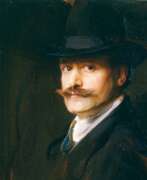

Philip Alexius de László, an Anglo-Hungarian artist renowned for his portraiture, captured the likenesses of many notable figures from European royalty to prominent societal personalities. Born in 1869 in Hungary and later becoming a British citizen in 1914, de Philip László's work is celebrated for its vibrant realism and intimate depiction of character, making him a favorite among high society across Europe and beyond.
Philip De László's artistry earned him numerous honors, including being ennobled in Hungary and receiving medals from British royalty. Despite his accolades and successful integration into British society, he faced internment during World War I, which was a significant period of adversity in his otherwise illustrious career. His legacy includes over 4,000 works, with portraits housed in prestigious institutions like the National Portrait Gallery in London.
His subjects spanned a wide array of influential figures including Emperor Franz Joseph of Austria, U.S. President Calvin Coolidge, and Queen Marie of Romania. These portraits are not merely artistic renditions but historical documents that offer a glimpse into an era defined by its cultural and political complexities. His works continue to be studied and admired for their technical excellence and historical significance, making them highly valuable to collectors and experts in art and antiques.
For those interested in staying updated on exhibitions, sales, or auctions related to Philip Alexius de László's works, subscribing for notifications can provide timely information and opportunities to acquire pieces by this distinguished artist. This ensures that enthusiasts and collectors don't miss out on important events tied to his enduring artistic legacy.


Edwin James Douglas was a British animal painter.
Edwin was the son of the famous portrait painter James Douglas, studied at the Royal Scottish Academy schools and exhibited his first works at the Royal Scottish Academy at the age of only 17. Edwin Douglas painted hunting scenes, dogs and horses, which attracted many famous patrons, including Sir Charles Tennant and Queen Victoria. She even purchased a painting of setters as a birthday present for King Edward VII.
Douglas was a very successful artist whose animal paintings, like those of his predecessor Landseer, resonated with Victorian collectors. He was best at dogs and horses, but he also painted portraits and genre pictures. Between 1869 and 1900 he exhibited at the Royal Academy, forty-one works in all, at the Royal Scottish Academy and other venues in London and the provinces. In addition to painting, Douglas had a passion for cattle breeding and was elected an honorary life member of the Jersey Cattle Society of England.
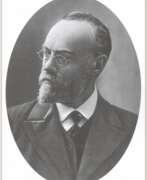

Nikolay Nikanorovich Dubovskoy (Russian: Николай Никанорович Дубовской) was a distinguished Russian landscape painter, renowned for his significant contributions to the "Landscape of Mood" movement alongside Isaac Levitan. Born into a Don Cossack family in Novocherkassk in 1859, Dubovskoy demonstrated artistic talent from an early age, initially encouraged by his uncle A.V. Pyshkin. Despite his father's initial insistence on a military career, Dubovskoy pursued his passion for art, studying under Mikhail Clodt at the Imperial Academy of Arts and later refusing a conventional academic path to instead exhibit with the Imperial Society for the Encouragement of the Arts. His work, "Winter," gained him early recognition when acquired by the Tretyakov Gallery in 1884.
Dubovskoy's legacy includes several masterpieces, such as "After the Rain," a beautiful example of his mature period that demonstrates the influence of French Impressionism, with its open composition and luminous treatment of light. This piece and others underline his mastery in capturing the nuanced interplay of light and atmosphere, resonating with both the Impressionist and Itinerant movements. Unfortunately, the distribution of his works across various museums after his death and the Soviet Union's collapse has made accessing his complete oeuvre challenging, requiring a journey across multiple countries.
Dubovskoy's contributions to Russian landscape painting and his unique ability to evoke mood and atmosphere in his works have cemented his place among the greats of the art world. His paintings, such as "The Calm Evening," praised as a "poem in gold" by critics, demonstrate his exceptional skill in rendering the delicate interplay of light and color. For those interested in exploring the depths of Russian landscape painting, Nikolay Nikanorovich Dubovskoy's works offer a rich and emotive experience, embodying the spirit of an era and the beauty of the Russian landscape.
To stay updated on sales and auction events featuring works by Nikolay Nikanorovich Dubovskoy, sign up for our updates. This subscription will ensure you're informed about new opportunities to appreciate and acquire pieces by this illustrious artist, focusing solely on relevant product sales and auction events.


Eugen Gustav Dücker was a Baltic German painter, in the Romantic style, associated with the Düsseldorfer Malerschule.
Despite his career's roots in Germany, he spent much of his time in Estonia, where he painted idyllic landscapes of the sea and the countryside. He also made numerous trips to Holland, Belgium, France and Italy.
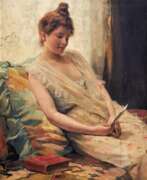

Auguste Frédéric Dufaux the Younger was a Swiss painter and sculptor.
Auguste's father, painter and sculptor Frédéric Guillaume Dufaux (1820-1872), taught him to draw, then he entered the Geneva School of Fine Arts, continued his studies in Paris and Florence.
Dufaux painted lovely female portraits in genre and intimate scenes, children playing, and many depictions of nude women, often near water. He lived in Paris from 1876 to 1891 and participated in the Salon des Artistes Français. From his travels in Egypt and Algeria, Dufaux brought back paintings of local exotic subjects. Dufaux also worked on a panoramic painting of the French Army's entry into Le Verrière and executed several sculptures of famous personalities.
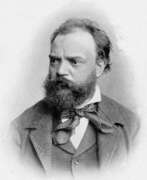

Antonín Leopold Dvořák was a Czech composer of the Romantic era and one of the founders of the Czech national school of music.
Dvořák showed musical talent early on and became an accomplished violinist. After graduating from the Institute of Church Music in Prague, he worked as a musician in various ensembles and taught, but lived very poorly. However, already in the 1860s he composed two symphonies, an opera, chamber music and many songs.
In 1875 Dvořák received a state scholarship from the Austrian government and met Johannes Brahms, with whom he developed a fruitful friendship. Dvořák's Moravian Duets (1876) for soprano and contralto and Slavonic Dances (1878) for piano duet first brought the composer and the music of his country to the world's attention. In 1884 he made a successful visit to England, and in 1890 the great composer Pyotr Ilyich Tchaikovsky arranged two concerts for him in Moscow. The following year Dvořák became an honorary doctor of music at Cambridge University.
In 1892 Dvořák accepted the post of director of the newly established National Conservatory in New York and, in addition to this work, traveled extensively in the United States, but in 1895 he returned to his homeland.
Through his work Dvořák expanded the path of the Czech national music school started by Bedřich Smetana. He composed in almost all classical music genres, and his symphonies and concertos, choruses and chamber compositions continue to be performed all over the world. Dvořák's best-known works include Symphony No. 9 "From the New World" (written in the USA), the opera Rusalka, the Concerto for Cello and Orchestra, the "American" String Quartet, Requiem, Stabat Mater and Slavonic Dances.


Alexander Semyonovich Egornov (Russian: Александр Семёнович Егорнов) was a Russian artist of the late 19th and early 20th centuries. He is known as a painter, watercolorist, master of landscape painting.
Alexander Egornov often traveled around Russia, bringing back from trips numerous sketches and sketches. Thanks to his individual creative manner the painter managed not to be lost among the whole constellation of Russian landscape painters of the second half of the 19th century. He was awarded the title of the academician of the landscape painting of the Imperial Academy of Arts in St. Petersburg. The master was also the head of the Society of Russian watercolorists.
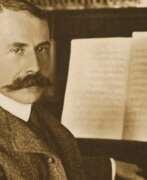

Edward William Elgar (Sir Edward William Elgar, 1st Baronet) was a British composer of the Romantic period.
The son of an organist, Elgar was a fine violinist, played the bassoon, and worked as a Kapellmeister and church organist. Then in Malvern, Worcestershire, he began composing music himself. He composed several major choral works, notably the oratorio The Light of Life (Lux Christi (1896,), and in 1898-99 he wrote the popular Enigma Variations for orchestra. Another major work followed in 1900, the oratorio The Dream of Gerontius, which is considered his masterpiece.
From 1905 to 1908 Elgar was the first Professor of Music at the University of Birmingham. During World War I, he periodically wrote patriotic works. His marches, introductions, symphonies, and concertos for strings are well known. Elgar's vibrant works contributed to the revival of English music in the 20th century during the transition from late Romanticism.
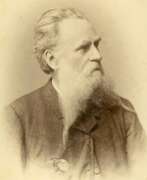

Hermann Wilhelm Benjamin Eschke was a German painter of the second half of the 19th century. He is known as a marine painter.
Hermann Eschke began his career by traveling through southern France and the Pyrenees, after which he became a free-lance artist, creating sketches and designs while traveling in Europe. In collaboration with his son Richard Eschke, the master created murals and dioramas, including works for the Imperial Panorama in Berlin. His contribution to art was recognized with honors and medals, including the title of "Royal Professor" and the gold medal of the Berlin Artists' Association.


John Anster Fitzgerald, known colloquially as "Fairy Fitzgerald," was a renowned Victorian-era painter whose works are noted for their ethereal and often eerie depictions of fairies and other mythological beings. An Irish descendant, born in London to the poet William Thomas Fitzgerald, John Anster Fitzgerald brought to life the darker corners of fairy tales and folklore in his art, earning a reputation for paintings filled with ghouls, demons, and surreal elements reminiscent of Hieronymus Bosch's nightmarish landscapes.
Fitzgerald's work, rich in allegory and symbolism, often engaged with themes of the supernatural, delving into the shadowy realms that lie beyond the human senses. His painting "The Fairy’s Lake," exhibited in 1866, is one such piece that exemplifies his unique style—dark, intricate, and brimming with fantastical imagery.
Today, Fitzgerald's paintings can be found gracing the walls of institutions such as the Tate Gallery, where his contributions to the genre of fairy painting are celebrated alongside other Victorian masters. His works continue to captivate collectors and art enthusiasts who have a penchant for the whimsical and the wondrous.
For those interested in the beguiling world of Victorian fairy painting, a subscription to our updates will alert you to new product sales and auction events related to John Anster Fitzgerald's works. Sign up to ensure you don't miss the opportunity to own a piece of this magical historical genre.
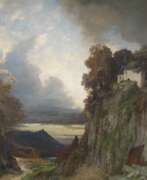

Albert Flamm was a German artist of the Düsseldorf school. He studied architecture at the Dusseldorf Academy of Art and in Antwerp. In 1841 he turned to painting and became a pupil of Andreas Achenbach. In 1848 Flamm became one of the founders of the Malkasten artists' association.
Albert Flamm painted mainly Italian landscapes, recognised for their truthfulness of nature, their vivid colours and their virtuosic treatments. He often chose an elevated viewing position to be able to create wide panoramic perspectives in warm, bright sunlight and with finely rendered detail.
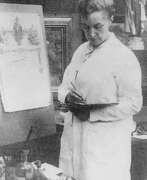

Eleanor Fortescue-Brickdale was a British Pre-Raphaelite painter, illustrator and stained glass artist.
At the age of 17, she enrolled at Crystal Palace School of Art and was later admitted to the Royal Academy of London and she initially worked with illustration. In 1897, Eleanor won a prize for her painting "Spring", which allowed her to begin work on her first large-scale oil painting, "The Pale Color of True Love". The painting was exhibited at the Royal Academy in 1899.
In 1902 Eleanor Fortescue-Brickdale was elected the first female member of the Institute of Oil Painters. She illustrated many books, including Tennyson's Royal Idylls in 1911. She taught at the Byam Shaw School of Art in Kensington. During the First World War, the artist designed posters for government departments and later several commemorative stained glass windows and a memorial in York Cathedral. In 1919 she became a member of the Royal Society of Watercolor Painters.
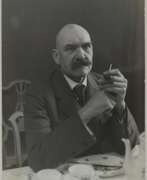

Akseli Gallen-Kallela, born Axel Waldemar Gallén, is a Finnish artist of Swedish descent.
He studied at the Académie Julian in Paris, traveled to Africa, and later designed flags, coats of arms and uniforms for the army of independent Finland.
Akseli Gallen-Kallela is a representative of Finnish National Romanticism and Northern Art Nouveau painting from 1880-1910. In his work he used symbolism and artistic techniques of Art Nouveau style. The unvarnished depiction of disease, suffering and social hardship was part of the naturalistic conception of art that Gallen-Kallela followed from the beginning of his career. He frequently painted the harshness of life, often with elements of Christian symbolism.




